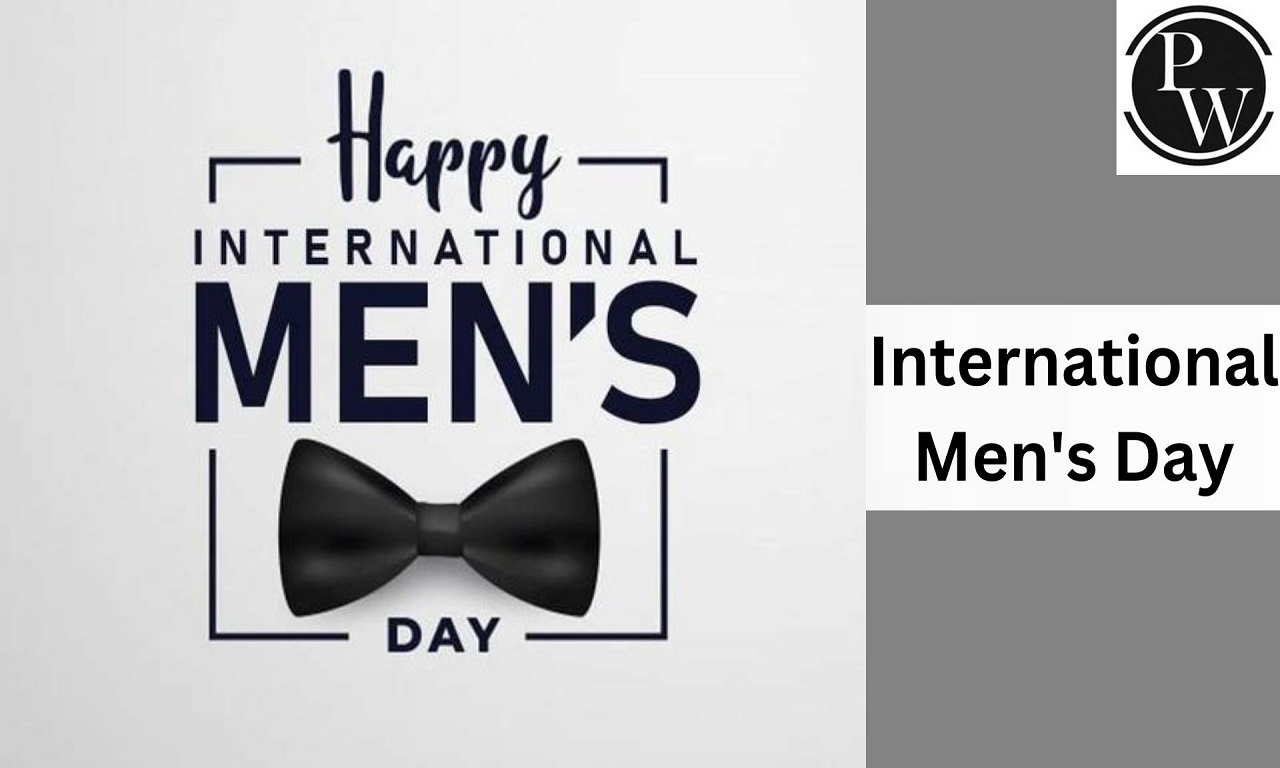

International Men's Day: International Men's Day (IMD) is a global observance addressing various challenges faced by men, such as parental alienation, abuse, homelessness, suicide, and violence. This annual celebration takes place on November 19 and is guided by the objectives outlined in the 'All the Six Pillars of International Men's Day.' It serves as a platform to honor the lives, achievements, and contributions of boys and men, particularly their roles in nation-building, unions, societies, communities, families, marriages, and childcare. The 2023 theme, "Zero Male Suicide," underscores the urgent need to address the significantly elevated rate of suicide among men.
International Men's Day History
Established on February 7, 1992, by Thomas Oaster, the concept of International Men's Day was conceived a year earlier, on February 8, 1991. The initiative was reintroduced in 1999 in Trinidad and Tobago, with Malta hosting the longest-running celebration since February 7, 1994. In 2009, Malta shifted the date to November 19 to align with the global observance.
Jerome Teelucksingh, the event's revitalizer, chose November 19 to commemorate his father's birthday and celebrate Trinidad and Tobago's football team, which united the country on that date in 1989 during their World Cup qualification efforts. Teelucksingh emphasizes that IMD is not solely a gendered day but a platform to address all issues affecting men and boys, striving for gender equality and dispelling negative taint associated with men in society.
International Men's Day Early Background
Calls for an International Men's Day date back to the 1960s, with suggestions like February 23. In the Soviet Union, this day was initially The Red Army and Navy Day, later renamed Defender of the Fatherland Day. By 2002, some former Soviet countries, including Belarus, Ukraine, Moldova, Russia, and Georgia, transitioned to celebrating International Men's Day on November 19.
In 1968, American journalist John P. Harris highlighted the lack of balance in the Soviet system, advocating for a corresponding day for male workers. Similar concerns about gender inequality in observing Women's Day without a corresponding Men's Day were raised in media publications from the 1960s to the 1990s.
In the early 1990s, small International Men's Day events were held in the United States, Australia, and Malta. Thomas Oaster, a key figure, successfully promoted the event in 1993 and 1994 but faced low attendance in 1995, leading to a hiatus. The Maltese Association for Men's Rights continued to observe the event yearly in February until 2003 when they transitioned to align with the global date of November 19.
International Men's Day Six Pillars
International Men's Day aims to:
- Encourage the visibility of positive male role models, encompassing ordinary, working-class individuals.
- Commend men for their positive impacts on society, community, family, marriage, childcare, and the environment.
- Prioritize men's holistic well-being, covering social, emotional, physical, and spiritual aspects.
- Draw attention to discrimination against men in social services, attitudes, expectations, and the legal system.
- Enhance gender relations and advocate for gender equality.
- Strive to build a safer, improved world, nurturing individuals to feel secure and achieve their maximum potential.
International Men's Day Yearly Themes
Alongside the six pillars, global coordinators often propose an optional secondary theme for International Men's Day (IMD).
Examples include themes like peace in 2002, men's health in 2003, healing and forgiveness in 2007, positive male role models in 2009, and 'our children's future' in 2010.
Yearly Themes (2011-2023)
2011: "Giving Boys the Best Possible Start in Life."
2012: "Helping Men and Boys Live Longer, Happier, and Healthier Lives."
2013: "Keeping Men and Boys Safe."
2014: "Working Together for Men and Boys."
2015: "Working to Expand Reproductive Options for Men."
2016: "Stop Male Suicide" addresses the alarming disparity in suicide rates globally, advocating for awareness and action.
2017: "Celebrating Men And Boys In All Their Diversity" emphasizes a call to action for innovative approaches in resource design and delivery.
2018: "Positive Male Role Models."
2019: "Making a Difference for Men and Boys."
2020: "Better Health for Men and Boys."
2021: "Better relations between men and women."
2022: "Helping men and boys" is a broad theme encouraging support for men's well-being. In Australia, there's an additional focus on "Celebrating mateship" (#MakeTime4Mates) and "Men Leading by Example."
2023: "Zero Male Suicide" underscores a commitment to addressing and preventing male suicides.
International Men's Day Quotes
The true worth of a man is not measured by what he has, but by what he gives and how he gives it." "A man's worth is no greater than the worth of his ambitions." "Being male is a matter of birth. Being a man is a matter of choice." "A real man does not care about what other people think about him, he just does what he has to for the good of his family." "A man is but the product of his thoughts. What he thinks, he becomes." "Men of quality are not afraid of equality." "Strength is not about how much you can handle before you break, it's about how much you can endure after you've been broken." "The best way to predict the future is to create it." "The mark of a true man is the ability to learn from his mistakes and move forward with wisdom.| Related Links | |
| International Girl Child Day | World food day |
| Essay on earth day | A Rainy Day paragraph |
International Men's Day FAQs
When is International Men's Day (IMD) celebrated?
What is the significance of International Men's Day?
Why was November 19 chosen for International Men's Day?
What are the Six Pillars of International Men's Day?












